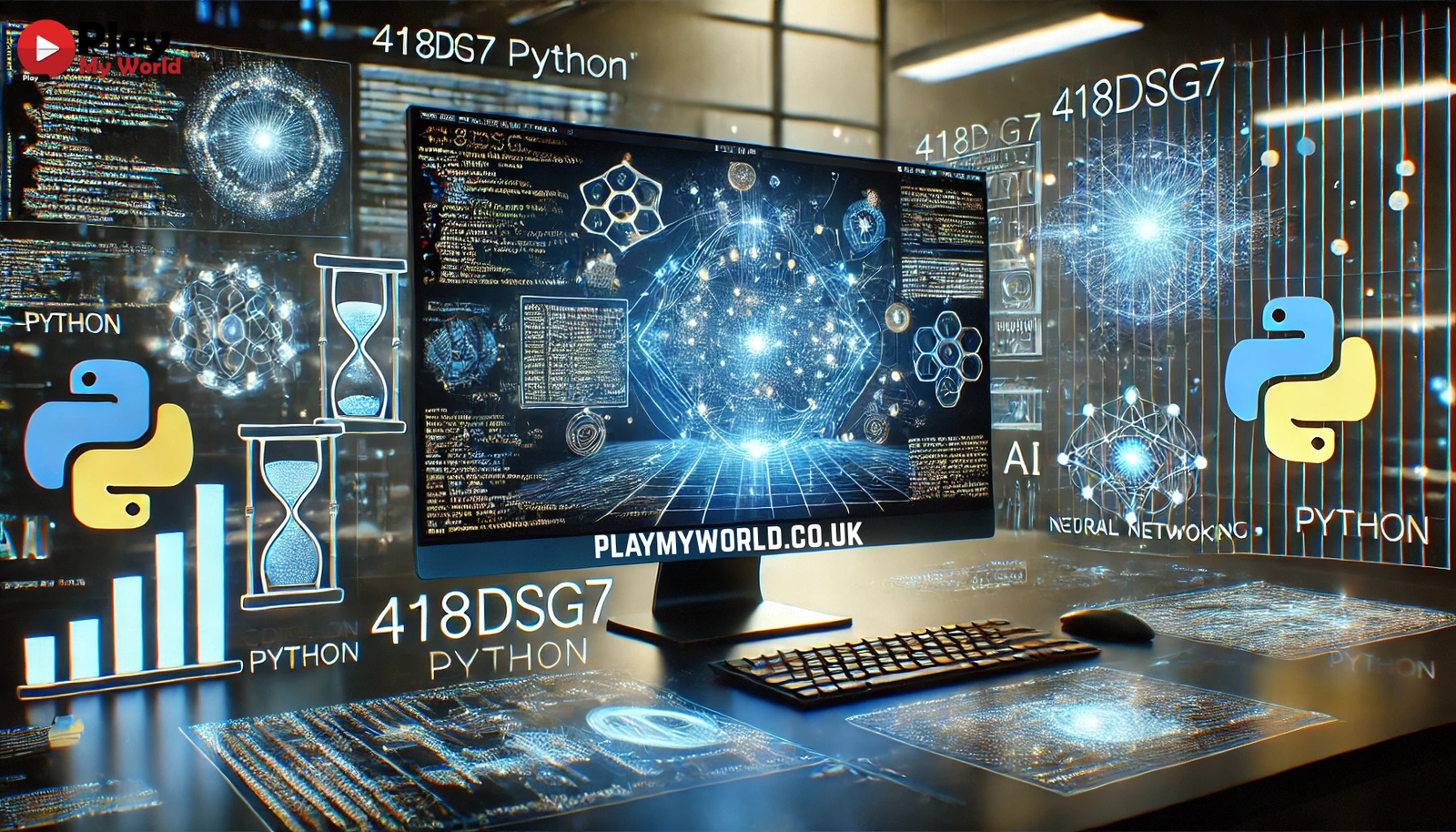Introduction
As the demand for more efficient data processing and complex computing grows, developers are constantly on the lookout for tools that can handle large-scale tasks with speed and flexibility. Enter 418dsg7 Python, a modern Python-based framework designed to empower developers with high-performance graph processing, optimized memory management, and parallel computing capabilities.
Whether you’re a data scientist, systems engineer, or developer working on real-time applications, 418dsg7 Python provides a powerful and scalable environment to build complex solutions faster. In this article, we’ll explore what 418dsg7 Python is, its core features, where it shines, and how to start using it effectively.
What Is 418dsg7 Python?
418dsg7 Python is a specialized open-source framework built on top of standard Python to support high-speed computation, large-scale graph analytics, and efficient data handling. It merges the simplicity of Python syntax with advanced features like:
- Multithreading and GPU acceleration
- Optimized graph traversal algorithms
- Efficient memory and resource management
- Seamless API and external service integration
It’s commonly used in fields like cybersecurity, social network analysis, bioinformatics, and enterprise-scale machine learning—places where both speed and scale are non-negotiable.
Also Read: Understanding the Type of FOK959S-M: A Complete Technical and Practical Guide
Core Features and Capabilities
High-Performance Graph Processing
Graph structures are integral in modeling everything from social networks to recommendation systems. 418dsg7 Python includes a native graph engine capable of:
- Handling millions of nodes and edges
- Supporting depth-first search (DFS), breadth-first search (BFS), and Dijkstra’s algorithm
- Running on multi-core CPUs or GPUs for faster traversal
Parallel and Distributed Computing
Through built-in support for multithreading and distributed clusters, this framework drastically reduces the time needed to compute large datasets. It utilizes:
- Thread pools to divide and execute tasks simultaneously
- Optional GPU acceleration for computation-heavy workloads
Memory Optimization and Stability
418dsg7 Python is engineered with advanced memory management, which includes:
- Automatic garbage collection tuning
- Memory pooling for repeated operations
- Real-time resource monitoring tools
Integration with Python Ecosystem
Despite its powerful internals, the framework plays well with others:
- Supports packages like NumPy, Pandas, and TensorFlow
- Can connect to REST and GraphQL APIs
- Easily integrates with databases like PostgreSQL, MongoDB, and Neo4j
Use Cases Across Industries
Cybersecurity
In real-time security systems, 418dsg7 Python is used to:
- Monitor and graph network traffic
- Detect anomalies using graph structures
- Automate threat pattern recognition
Data Science & Machine Learning
Data scientists use the framework to:
- Preprocess massive datasets quickly
- Run parallelized training jobs
- Integrate model outputs with live data feeds
Scientific Research
In disciplines like bioinformatics or physics, where datasets are both massive and intricate, 418dsg7 Python:
- Processes genome sequencing data
- Simulates complex models with large input variables
- Ensures precision and efficiency under load
Step-by-Step Guide: Getting Started with 418dsg7 Python
Step 1: Install the Framework
Ensure you’re running Python 3.8 or higher, then run:
bashCopyEditpip install 418dsg7
Step 2: Import the Core Modules
In your Python script or Jupyter Notebook:
pythonCopyEditfrom fok418.core import GraphEngine
from fok418.parallel import ParallelRunner
Step 3: Create a Graph
pythonCopyEditg = GraphEngine()
g.add_node("A")
g.add_node("B")
g.add_edge("A", "B")
Step 4: Run Parallel Task
pythonCopyEditdef process_node(node):
# Custom processing logic here
return node + "_processed"
runner = ParallelRunner()
results = runner.run(task=process_node, items=["A", "B", "C"])
Step 5: Monitor and Optimize
Use built-in profiling tools:
pythonCopyEditfrom fok418.monitor import ResourceMonitor
monitor = ResourceMonitor()
monitor.start()
This provides live feedback on CPU/GPU usage, memory allocation, and task duration.
Advantages Over Traditional Frameworks
- Faster graph operations compared to NetworkX
- Better scalability for machine learning tasks than plain Python multiprocessing
- Integrated diagnostics tools not typically available in open-source libraries
- Clean Pythonic syntax for rapid development
Also Read: How to Use Welloworpenz: The Ultimate Guide for Maximum Efficiency and Results
Conclusion
418dsg7 Python is more than just another Python library—it’s a high-performance computing ecosystem designed for modern, data-intensive applications. From graph theory to enterprise automation, it helps developers write less code and get faster results, without sacrificing clarity or compatibility.
By combining optimized performance, seamless integration, and scalability, 418dsg7 Python is a solid choice for professionals ready to take their Python development to the next level.
Whether you’re building models, monitoring systems, or running simulations, this framework ensures speed, accuracy, and control—everything a modern developer needs.
FAQs About 418dsg7 Python
1. What version of Python is required for 418dsg7?
You’ll need Python 3.8 or newer. Older versions may not support the latest features and performance enhancements.
2. Is 418dsg7 Python suitable for beginners?
Yes, the syntax is very beginner-friendly. However, the framework is optimized for intermediate to advanced users working on large datasets or system-level tasks.
3. Can I use it with Jupyter Notebooks?
Absolutely. It integrates smoothly with Jupyter, making it ideal for prototyping and visualization.
4. Does it work on Windows, macOS, and Linux?
Yes. 418dsg7 Python is cross-platform, but GPU acceleration may require Linux or specific drivers on Windows/macOS.
5. Where can I find tutorials or community support?
Official documentation, GitHub repositories, and developer forums provide tutorials, code samples, and community support for new users.




